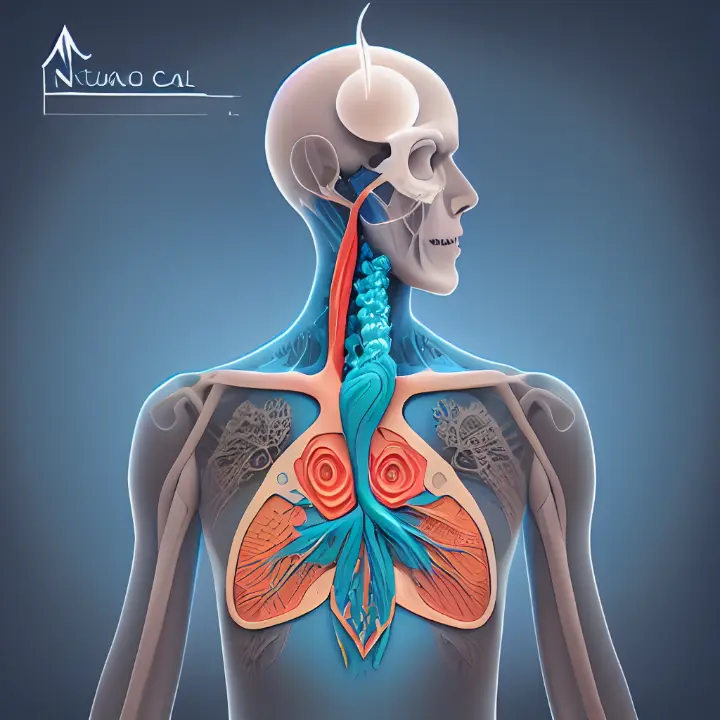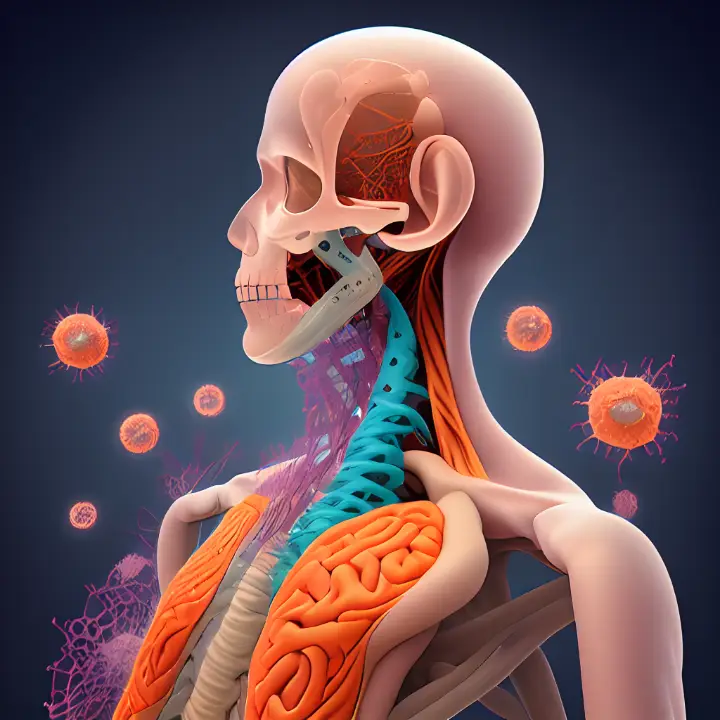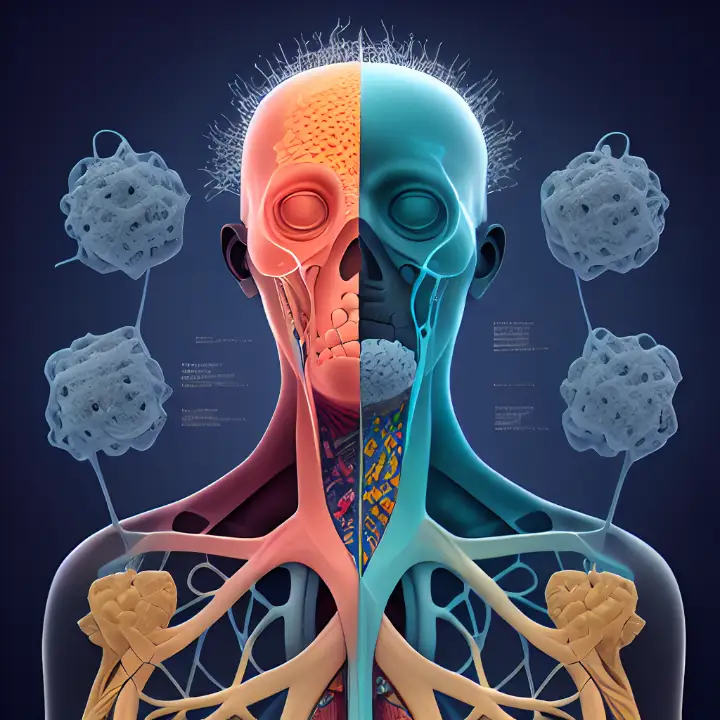What Is Nasopharyngeal Carcinoma and Its Symptoms?

Nasopharyngeal carcinoma is a rare type of cancer that begins in the nasopharynx, the upper part of your throat behind the nose. While uncommon, its global prevalence has significantly increased.
Global Statistics (1990-2030):
Statistic
Value
Incidence increase (1990-2019)
Double increase
Prevalence increase (1990-2019)
Triple increase
28,148
Projected deaths (2030)
5,888
Symptoms of nasopharyngeal carcinoma often mimic other conditions, making early detection challenging. You might notice:
Hearing loss or tinnitus
Nasal congestion or nosebleeds
Recognizing these signs early can save lives. If symptoms persist, consult a healthcare provider promptly.
Key Takeaways
Nasopharyngeal carcinoma is a rare cancer in the upper throat. It forms behind the nose. Finding it early helps with better treatment.
Early signs include a lump in the neck, hearing loss, or stuffy nose. If these last long, see a doctor quickly.
Genes and the Epstein-Barr virus are big causes of this cancer. Eating habits and smoking can also raise the risk.
Regular doctor visits and knowing your family history can help find it early. If caught early, 82% of people live for 5 years or more.
Eating less salty food and drinking less alcohol can lower risk. Learning about it helps you stay healthy and take action.
What Is Nasopharyngeal Carcinoma?
Understanding the Nasopharynx
The nasopharynx is the uppermost part of your throat, located behind the nasal cavity and above the soft palate. It connects the nasal cavity to the oropharynx and plays a vital role in breathing, voice resonance, and immune defense. The nasopharynx also contains openings to the auditory tubes, which help equalize air pressure in your ears.
Anatomical Structure | Description |
|---|---|
Location | Uppermost region of the pharynx, behind the posterior nasal apertures and above the soft palate. |
Connections | Connects the nasal cavity to the oropharynx and has openings to the auditory tubes. |
Functions | - Connects nasal cavity to larynx and trachea. |
Causes of Nasopharyngeal Carcinoma
Genetic and Environmental Factors
Nasopharyngeal carcinoma develops when genetic and environmental factors interact. Genetic predispositions can make you more vulnerable to this cancer. For example, inherited traits may affect how your immune system responds to infections like the Epstein-Barr virus (EBV). Environmental factors, such as exposure to carcinogens in certain foods, can also damage DNA and disrupt normal cell growth.
Viral Infections, Such as Epstein-Barr Virus
The Epstein-Barr virus plays a significant role in the development of nasopharyngeal carcinoma. EBV infection can alter the genetic makeup of cells in the nasopharynx, leading to abnormal growth. This virus is particularly linked to the non-keratinizing and undifferentiated subtypes of the cancer. However, EBV alone does not cause the disease. Other factors, such as diet and smoking, often contribute to its onset.
Risk Factors
Geographic and Ethnic Predispositions
Your geographic location and ethnicity can influence your risk of developing nasopharyngeal carcinoma. This cancer is more common in southern China, Southeast Asia, and parts of North Africa. In these regions, diets high in salt-cured fish and meat are common. These foods contain chemicals that may activate EBV and increase cancer risk. Genetic susceptibility in these populations also plays a role.
Lifestyle Factors, Including Diet and Smoking
Certain lifestyle choices can increase your risk of nasopharyngeal carcinoma. A diet rich in salt-cured foods introduces harmful nitrites into your body, which can damage DNA. Smoking and heavy alcohol consumption also contribute to the risk by exposing your cells to carcinogens. Avoiding these habits can help lower your chances of developing this cancer.
Symptoms of Nasopharyngeal Carcinoma

Early Symptoms
Nasopharyngeal carcinoma often begins with subtle signs that can resemble common illnesses. Recognizing these early symptoms can help you seek timely medical attention:
Nasal symptoms: Persistent nasal congestion or stuffiness may occur. You might also notice nosebleeds or blood-stained sputum when coughing.
Ear-related symptoms: Hearing loss, ringing in the ears (tinnitus), or chronic ear infections that keep coming back are common. These symptoms often result from the tumor affecting the auditory tubes.
Swollen lymph nodes in the neck: A painless lump in your neck could indicate swollen lymph nodes, which is often one of the first noticeable signs.
These symptoms may seem minor at first but should not be ignored, especially if they persist or worsen over time.
Advanced Symptoms
As nasopharyngeal carcinoma progresses, the symptoms become more severe and harder to overlook. These advanced signs often indicate that the cancer has spread to nearby tissues or nerves:
Persistent headaches: Frequent headaches that do not respond to usual treatments may occur.
Facial pain or numbness: You might experience discomfort or a loss of sensation in parts of your face.
Difficulty breathing, speaking, or opening the mouth: Tumor growth can obstruct airways or affect jaw movement, making these activities challenging.
Vision problems and persistent ear infections: Blurred vision or double vision may develop if the cancer impacts the nerves around the eyes. Chronic ear infections that do not resolve could also signal advanced disease.
If you notice any of these symptoms, especially in combination, consult a healthcare provider immediately. Early detection of nasopharyngeal carcinoma can significantly improve treatment outcomes.
Why Recognizing Symptoms Is Crucial
Importance of Early Detection
Detecting nasopharyngeal carcinoma early can significantly improve your chances of successful treatment. When diagnosed at a localized stage, the 5-year survival rate reaches 82%. Early detection allows doctors to stage the cancer accurately, providing critical information about its extent and guiding treatment decisions. For example, MRI scans offer high sensitivity and specificity in identifying nasopharyngeal carcinoma. This accuracy can help avoid unnecessary biopsies and ensure timely intervention.
By catching the disease early, you reduce the risk of complications. Advanced stages often involve the spread of cancer to nearby tissues or nerves, leading to severe symptoms like facial numbness or vision problems. Early diagnosis minimizes these risks, giving you a better quality of life during and after treatment.
When to Seek Medical Attention
You should consult a healthcare provider if you notice symptoms that persist or worsen over time. Signs like chronic ear infections, difficulty opening your mouth, or blood-stained sputum may indicate nasopharyngeal carcinoma. If these symptoms last more than two weeks, they warrant immediate medical attention.
Your family history also plays a crucial role. If a close relative has had nasopharyngeal carcinoma, your risk increases due to shared genetic and environmental factors. Certain inherited tissue types may affect how your immune system responds to infections like the Epstein-Barr virus, further elevating your risk.
Tip: Pay attention to persistent symptoms and consider your family history. Early action can make a significant difference in your health outcomes.
How Is Nasopharyngeal Carcinoma Diagnosed?

Diagnostic Methods
Accurate diagnosis of nasopharyngeal carcinoma involves several steps. Each method plays a unique role in identifying and confirming the disease.
Physical Examination
Your doctor will begin with a thorough physical examination. They will check for signs like swollen lymph nodes in your neck or unusual growths in your nasopharynx. A detailed medical history will also help identify risk factors, such as family history or exposure to carcinogens. This step provides a foundation for further diagnostic tests.
Diagnostic Method | Description |
|---|---|
Medical History & Exam | Involves gathering a complete medical history and performing a physical examination for signs of NPC. |
Imaging Tests, Such as MRI and CT Scans
Imaging tests are essential for detecting nasopharyngeal carcinoma and assessing its spread. MRI scans are often the first choice. They use magnetic fields to create detailed images of your nasopharynx and surrounding tissues. MRI can identify hidden or multiple lesions, improving the accuracy of subsequent biopsies.
CT scans may also be used to evaluate the extent of the tumor. These tests provide critical information for staging the cancer and planning treatment.
MRI offers a sensitivity of 98.1%, making it highly effective in detecting nasopharyngeal carcinoma.
It is particularly useful for locoregional staging, helping doctors determine the cancer's reach.
Biopsy and Laboratory Tests
A biopsy is the definitive method for diagnosing nasopharyngeal carcinoma. During this procedure, your doctor removes a small tissue sample from the nasopharynx. Laboratory tests then analyze the sample for cancer cells.
Different types of biopsies may be used depending on your situation:
Endoscopic biopsy: A fiber-optic scope helps collect tissue from the nasopharynx.
Fine needle aspiration: A thin needle extracts cells from a suspicious lump, such as a swollen lymph node.
If initial biopsy results are inconclusive, your doctor may recommend repeating the procedure. This ensures an accurate diagnosis, especially in cases of suspected malignancy.
Tip: Early and accurate diagnosis improves treatment outcomes. If you experience persistent symptoms, consult a healthcare provider promptly.
Nasopharyngeal carcinoma is a rare but serious condition that requires your attention. Early symptoms like nasal congestion or swollen lymph nodes can easily be overlooked. Detecting the disease early improves survival rates, with localized cases showing a 5-year survival rate of 82%. Advances in treatment and a multidisciplinary approach have further enhanced patient outcomes. Staying informed about your health empowers you to act quickly if symptoms arise. Proactive care and regular check-ups can make a significant difference in managing this condition effectively.
FAQ
What is the main cause of nasopharyngeal carcinoma?
Nasopharyngeal carcinoma often develops due to a combination of genetic factors and Epstein-Barr virus (EBV) infection. Environmental triggers, such as exposure to carcinogens in certain foods, can also contribute.
Tip: Limiting your intake of salt-cured foods may help reduce your risk.
Can nasopharyngeal carcinoma be prevented?
You cannot completely prevent it, but you can lower your risk. Avoid smoking, limit alcohol consumption, and reduce exposure to carcinogens. A healthy diet and regular check-ups also play a role in prevention.
Is nasopharyngeal carcinoma hereditary?
While it is not directly inherited, a family history of the disease increases your risk. Genetic predispositions, combined with environmental factors, may make you more susceptible.
How is nasopharyngeal carcinoma treated?
Treatment often includes radiation therapy, chemotherapy, or a combination of both. The choice depends on the cancer stage and your overall health. Early detection improves treatment success.
Are children at risk for nasopharyngeal carcinoma?
Nasopharyngeal carcinoma is rare in children. However, certain genetic and environmental factors can increase risk. If a child shows persistent symptoms, consult a healthcare provider promptly.
Note: Early diagnosis is crucial, regardless of age.
---
ℹ️ Explore more: Read our Comprehensive Guide to All Known Cancer Types for symptoms, causes, and treatments.
See Also
Understanding Hepatocellular Carcinoma: Key Symptoms Explained
Exploring Carcinoid Syndrome: Symptoms You Should Know
Identifying Symptoms Associated With Hypopharyngeal Cancer
Head and Neck Cancer: Symptoms and Underlying Causes
Chondrosarcoma Explained: Recognizing Its Symptoms and Signs
